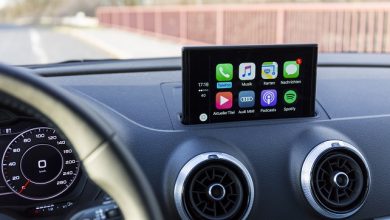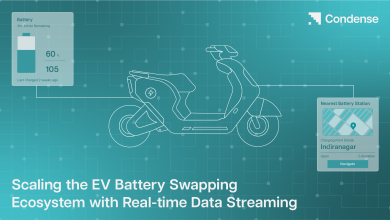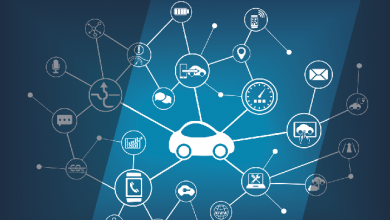Perspectives on the Future of Smart Automotive in India
Automotive sector is evolving very rapidly.From being purely mechanical devices, they are now coming with software and connectivity components. Vehicles now have multiple systems controlling different functionsin them. Growth in functionality is predominantly driven by safety, connectivity and consumer needs.
 This comes at a time when India is set to experience a digital revolution that will see business, government and the society fundamentally transforming the way each operate. The importance of emerging technologies (such as AI, IoT, Big Data, Cloud apps) has been widely acknowledged. The current budget presented by government depicts plans to invest in the above areas. Further, alliedindustry usage of emerging technologies -for example, in infrastructure,where efforts are underway to implement ‘pay-as-you-go’ systems at toll plazas – will provide further impetus to accelerate the growth of smart vehiclesto fully realize efficiencies from these initiatives.
This comes at a time when India is set to experience a digital revolution that will see business, government and the society fundamentally transforming the way each operate. The importance of emerging technologies (such as AI, IoT, Big Data, Cloud apps) has been widely acknowledged. The current budget presented by government depicts plans to invest in the above areas. Further, alliedindustry usage of emerging technologies -for example, in infrastructure,where efforts are underway to implement ‘pay-as-you-go’ systems at toll plazas – will provide further impetus to accelerate the growth of smart vehiclesto fully realize efficiencies from these initiatives.
What is the innovation?
Automotive players are looking to capitalize on IoT, Big Data, and AI systems to differentiate themselves from their competition. By integrating digital human-machine interfaces (HMIs), IoT sensors, software applications for connectivity and autonomous features (such as object recognition and self-driving capabilities), they are creating vehicles of the future.The increased focus on R&D by global automotive and technology leaders in smart cars is expected to disrupt the current business model. India, having a large automotive market, cannot go untouched.
Innovation leaders are finding merit in initiatives such as self-driving vehicle projects and software offerings such as smart mobility and connectivity platforms for cars to cater to the growing need from the automotive sector. Some examples include:
- A large automotive player working with and technology & ecommerce giant on an IoT platform to grant vehicle owners access to their connected-home devices from their cars through an application
- Applications to use voice commands to remotely lock their vehicle, check fuel levels as well as the other way round, i.e., access home systems connected to the IoT network from the vehicle
What is driving the shift?
Smart manufacturing and IoT in automotive production has been in play for some time now. These enable OEMs to more effectively track critical machine data through the use of sensors and respond to deviations quickly. This in turn has a direct impact on the quality and safety standards of the final car components. It also results in major cost savings through reduced scrap, rejection rates and after-market issues.
The ‘smart’ advantages are now moving outside manufacturing plants and being embedded onto the products i.e. the vehicles. The time is ripe as consumers have already been exposed to these through other industries.
Some of the key drivers for the focus to be shifting towards the smart automotive could be:
- The growing use of sensors and software embedded in products
- The ability to reliably and inexpensively connect and network with customers, and suppliers via the Internet of Things
- The availability of cloud-based data storage
- Sophisticated analytical systems capable of processing large volumes of data and deliver insights in near real-time and finally,
- Rising customer expectations towards smart, connected and autonomous vehicles.
The smart automotive ecosystem is also expected to be characterized by technology-led growth in related areas and industries such as:
- Internal Usage for manufacturers: Customer relationship analytics, R&D spend optimization, and Warranty servicing
- Ancillary Usage: Usage based insurance packages, Mobility services, Fleet optimization, Electric car servicing, Mobile commerce payments
- Enterprise to Enterprise: Remote diagnostics & predictive maintenance, Device management
- Enterprise to customer: Safety and security, Auto telematics, In-car infotainment, customization, ADAS (Advanced Driver Assistance Systems)
Smart opportunities in the vehicle
Mobile navigation apps connected to the car’s smart system are already in use. Other than helping in navigation, they also help by highlighting places of interest (such as restaurants and fuel stations) on the route. They are likely to become further entrenched through a series of mainstream offerings from automotive OEMs.
The smart automotive can also provide usersthe experience of intelligent functions as self-parking, auto-braking, cruise control alongside automatic accident-prevention features, machine-operated power-steering, and electric parking brakes, as well as electronic throttles and engine control.
As the ecosystem scales up, Indian OEMs, platform and software providers and other players might further need to forge or strengthen partnerships with global chipset manufacturers and best-in-class technology providers to achieve comparable levels of performance in their self-driving vehicles.
With further technological maturity, the connected car is expected toshape market trends and automotive manufacturers’ relationships. Smart features such as engine maintenance signals, safety sensors and smartphone integration are already transitioning towards mainstays in upmarket vehicles. Industry leadership is expected, in certain cases to favor newer players capitalizing on the above, as conventional OEMsmay be compelled to accelerate their drive for innovation.
Moving towards a fully autonomous vehicle
Autonomous systems in vehicles may range from partial to complete autonomy. In the former case, for example, the vehicle may take over longitudinal and lateral control in controlled situations such as highways, with the driver monitoring traffic and retaining control with a lead time. In the latter case, the vehicle may be entrusted to control all tasks.
In-roads into partial and full automation of vehicles in India will be dependent on the development of enabling infrastructure to support the same. The deployment of low latency V2X (Vehicle to Everything) communication systems – e.g., V2I (Vehicle to Infrastructure), V2P (Vehicle to Pedestrian), V2V (Vehicle to Vehicle) and V2G (Vehicle to Grid), is expected to facilitate the above and bring about demonstrable value through the added safety and energy savings from them.
In the initial phases, autonomous vehicles could find use in controlled ecosystems such as industrial parks and institutional premises and campuses, (for example as shuttles, which could act as viable testing grounds to ascertain the longer term safety, maintenance and legal implications of operating them). The focus on ensuring reliable connectivity and processing large volumes of data is expected to provide a boost to telecom operators. Some of them have already got into partnerships with hardware, platform and software developers and OEMs for the same.
Also, some of the leading mobile app-based transportation service providers have begun to collaborate with large, technologically advanced OEMs in co-developing driverless cars with the goal of deploying a fleet of autonomous vehicles.
Fully autonomous vehicles might require a longer span of time to reach the mainstream consumer. This span would be marked by an exciting period of transformation for automotive manufacturers who must navigate the challenges of designing, manufacturing, and upgrading traditional models while making strides in new-age technologies and improved customer experience.
Our viewpoint
We believe that with the wide-scale developments in V2X communication and networking of the smart vehicle, the utility of vehicles may be accentuated beyond mere transportation into a hub where people can communicate, work, surf the internet and access multi-media services during the journey. The value chain for automotive players could extend beyond the showrooms and into software based interactions with individual vehicle owners for a sustained brand experience and customer relationships.
Further, we picture a future for the automotive industry where autonomous, shared and connected features will increase the rate of innovation characterized by shortened model introduction cycles (from the current 5-8 years to an annual basis).The above trend can be expected to be driven by incremental integration of the latest hardware and software features, which could be pushed to vehicle owners in the form of regular upgrades. It would also likely imply a re-distribution in R&D investment for automakers – with greater focus on smart features and software applications and quicker returns. Manufacturing operationsmay be faced with the need for flexible production techniques to accommodate the pace of upgrades.
Autonomous vehicle adoption will be further supported by (and reciprocally support) the simultaneous electrification of vehicles. For example, autonomous vehicles targeted towards safe transport in urban settings may act as a case for electric cars which are suitable for similar scenarios. Conversely, the availability of automatic charging points would prove conducive to seamlessly operating autonomous vehicles.
Finally, changing consumer preferences among the younger generations might weigh in in favor of ‘shared mobility’ versus ‘ownership’. Combined with the focus on safety and efficiency in smart vehicles, this could imply much more intensive use of vehicles at lower maintenance and repair costs.
The smart automotive revolution is already underway as has been seen in the Auto Expo 2018 where OEMs have unveiled examples of electric and autonomous vehicles, smart features such as touch-screens, face and gesture recognition, auto-balancing two-wheelers, augmented reality displays, and intelligent learning of routes and more.
In conclusion
Automakers making investments in emerging market countries such as India may require a conservative approach – closely managing costs and factory capacity to navigate the next few years. The cost of enabling technology such as sensors (proximity, GPS, vision, audio, etc.), software, storage and connectivity is expected to drop over the coming years along with the mushrooming of start-ups and specialized connected, smart and autonomous vehicle technology providers. As the technology is further democratized and commercialized, strategic partnerships and joint business relationships with local players might benefit automakers looking to gain competitive advantage in the evolving market.
While the basic tenets of the smart automotive remains the same, the traffic rules and conditions of each country force unique customizations to the solution. For India, it is important that the underlying AI and ML systems for smart vehicles be trained in a way that captures the added complexity of roads in India, traffic signs and markings which may be worn out, pedestrian movement on roads, unstructured traffic conditions, high proportion of two-wheelers, abrupt lane changes, etc. as opposed deploying systems trained on more structured environments of developed markets.
Authored by–
Sudipta Ghosh, Partner- Data and Analytics Leader, PwC India
Sudipta Ghosh has more than 19 years of consulting experience in the field of Data Science & Analytics and Enterprise Performance Management (EPM). He is currently the Data and Analytics leader responsible for defining the product/solution strategy, go to market initiatives and incubating differentiated solutions from an industry perspective at PwC India.




